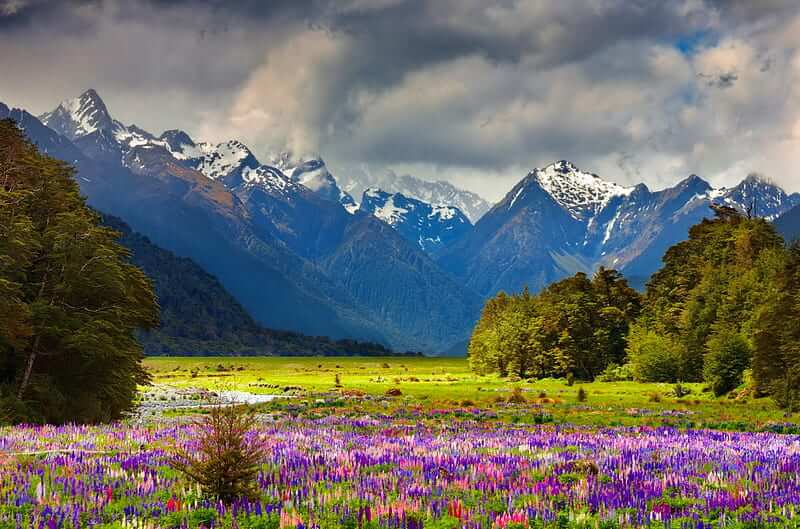Visiting a country without knowing about its weather may not be a good idea. So, here is a guide to summer and other seasons in New Zealand in case you’re planning to embark on the journey of discovering this beautiful country.
New Zealand Climate In General

The original name of New Zealand is “Aotearoa” in the Maori language. It means “The Land of the Long White Cloud”. Since then, the weather has been of critical significance to New Zealanders.
Overall, New Zealand has gentle temperatures, relatively high rain, and long sunshine hours across the majority of parts of the nation. Its ocean and mountains do have extreme effects on the climate.
Generous Temperature – Seasons In New Zealand

New Zealand has mainly moderate weather conditions. Since most of the parts of this country lie near the beach, it leads to the fact that the climate is mild with generous sunlight and medium rainfall.
Due to the fact mentioned above, when traveling from North to South, you will find that the moderate degree tends to drop as you go. During summer, the distant north has subtropical temperature, meanwhile, in the winter of the South Island, the degree may fall off to – 10°C.
There Are Four Seasons in Just One Day

Though the temperature in New Zealand does not fluctuate in a considerable range, the weather still can vary suddenly. You may witness a quick coming of a tropical storm right after experiencing the chilly weather.
Sunshine – Seasons In New Zealand

Generally, better parts of New Zealand areas obtain more than 2000 hours of sunshine annually. The sunniest regions are Hawke’s Bay, the Bay of Plenty, and Marlborough. The estimated average hours of sunlight they receive is about 2350.
In Rangiora in the Canterbury region, Marlborough, and Christchurch, the highest temperature could be up to 42°C and the lowest was – 22°C in Ophir, Central Otago.
As a result, during summertime, the sunlight can stay up until 10.00 pm. New Zealanders have to be exposed to extremely strong UV rays at this time, however, the good news is they undergo fairly little air deterioration in comparison with many other nations.
In the best heated time of the day, which ranges from 11 a.m. to 4 p.m., you should probably wear sunscreen and cover your body as much as you can.
The Percentage of Rainfall

The average proportion of rainfall in New Zealand is quite high, between 640mm and 1500mm in a year. This is an ideal condition for native forests to grow. This also gives New Zealand an excellent advantage to develop the agriculture industry.
Summertime – Seasons In New Zealand

With sunlight and high temperatures, the summertime in New Zealand is from December to February. The day length is longer with dryness atmosphere from sunshine and becomes mild at night.
As in every other part of the world, this is an ideal period to play outdoor games and wander around the streets. New Zealand has many stunning seasides for you to explore and experience water sports such as surfing, sunbathing, swimming, boating, etc.
Autumn

The country’s autumn time lasts from March to May. At this time of the year, the temperatures may be a little cooler but you can still have a nice swim in several areas until April.
Though New Zealand is famous for its evergreen landscapes, the deciduous trees are still worth the sight. Multicolor switching leaves make autumn a picturesque joy. Especially in areas which already well-known for their autumn wonders like Hawke’s Bay, and Central Otago.
Cold Winter – Seasons In New Zealand

From June to August is the winter in New Zealand. The weather carries colder temperatures to better parts of the country and more rainfall to many regions on the North Island. When mountains get snow-covered, it’s a great chance to experience gorgeous views and amazing skiing.
Spring

The last period of the year in New Zealand, from September to November is spring. And you must know that this weather can bring various feelings to you, from warm and hot to cold and freezing as well.
During the spring blooms, you can join in many spectacular holiday events. People in Alexandra and Hastings celebrate this time with a blossom carnival. If you are a big fan of colorful flower displays and other joyful activities, you should never let these things slide.
Related Posts You Can Read:
Strange Facts About The Climate In Canada

I like this post, enjoyed this one regards for posting.